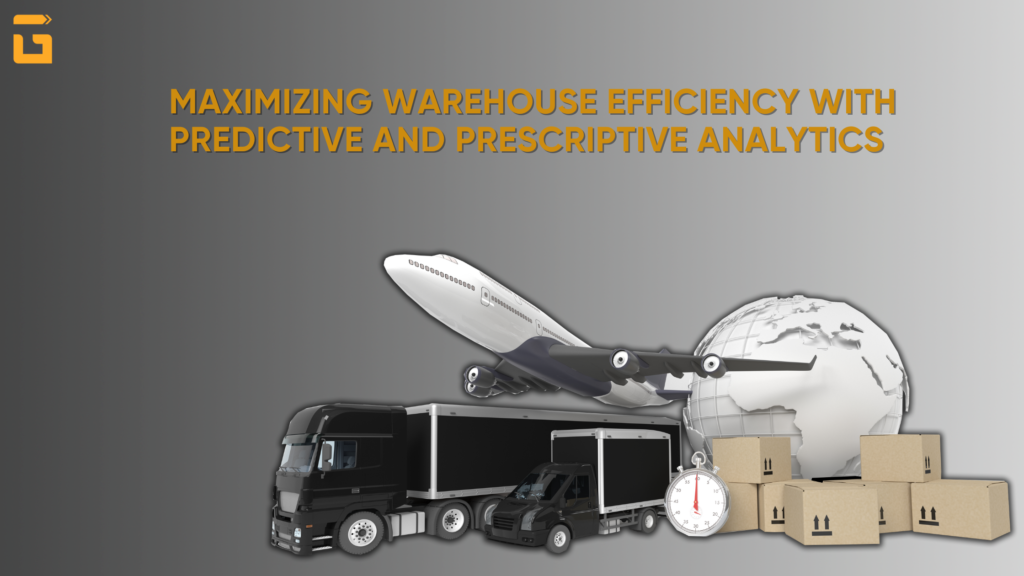In the dynamic realm of modern business, optimizing warehouse operations stands as a pivotal imperative for achieving operational excellence. Harnessing the power of predictive and prescriptive analytics emerges as a cornerstone strategy, empowering warehouse managers to streamline processes, cut costs, and amplify productivity. While predictive analytics prognosticates future outcomes, prescriptive analytics delves deeper, prescribing optimal courses of action to propel operations forward.
1. Slotting Optimization
Product slotting poses a multifaceted challenge, entailing a myriad of input variables and conflicting objectives. Traditional solutions demand intricate models, extensive engineering, and exhaustive data collection. However, cutting-edge AI-driven slotting models circumvent manual interventions by assimilating spatial nuances within the distribution center (DC). By leveraging order history, batching patterns, and warehouse layout data, these models prescribe optimal slotting strategies. This optimization minimizes travel time, curtails replenishment tasks, and maximizes warehouse space utilization, fostering operational agility and efficiency.
2. Restock/Replenishment Planning
Maintaining optimal inventory levels is paramount to meet customer demands without succumbing to overstocking. Predictive analytics discern future demand based on historical sales data, seasonal fluctuations, and market dynamics. Armed with these insights, warehouse managers orchestrate restock and replenishment activities with precision, ensuring inventory equilibrium and mitigating stockouts. With the surge in ecommerce orders, proactive solutions are indispensable to circumvent stockouts and avert bloated inventories, thereby fortifying bottom-line resilience.
3. Flow Improvement and Work Order Task Optimization
Value stream mapping emerges as a potent tool to scrutinize and optimize material and information flow within warehouses. By amalgamating historical data with predictive analytics, managers identify bottlenecks, streamline processes, and instigate continuous improvement initiatives. This holistic approach facilitates task restructuring, route optimization, and customizable workflows across major material handling processes, fostering seamless operations from receiving to shipping, bolstering operational efficacy and adaptability.
4. Pick Error Prediction
Mispicks inflict substantial financial losses and tarnish brand reputation. Predictive analytics inject intelligence into error detection mechanisms by assessing package contents and picker performance. By estimating error probabilities, warehouse managers preemptively audit high-risk packages, averting costly discrepancies and fortifying quality assurance protocols. Prescriptive analytics further optimize decision-making by automating auditing processes, minimizing error rates, and enhancing customer satisfaction.
Charting the Analytics Journey
Given the intricacies of warehouse optimization, traditional approaches fall short in addressing multifaceted challenges. Consequently, warehouse managers are embracing AI-driven software solutions tailored to their unique processes and technological landscapes. These solutions, characterized by modular architectures and adaptive workflows, deliver unparalleled optimization capabilities, ensuring seamless scalability and rapid ROI. Management dashboards furnish real-time insights, empowering decision-makers to optimize workforce scheduling, enhance operational transparency, and elevate performance benchmarks.
In today’s fiercely competitive warehousing landscape, efficiency reigns supreme. Predictive and prescriptive analytics serve as indispensable allies, equipping warehouse operations managers with actionable insights to revamp processes, optimize workflows, and deliver unparalleled customer service. By embracing analytics-driven strategies, warehouse managers can chart a path towards heightened efficiency, cost reduction, and sustained competitive advantage in an ever-evolving marketplace.




